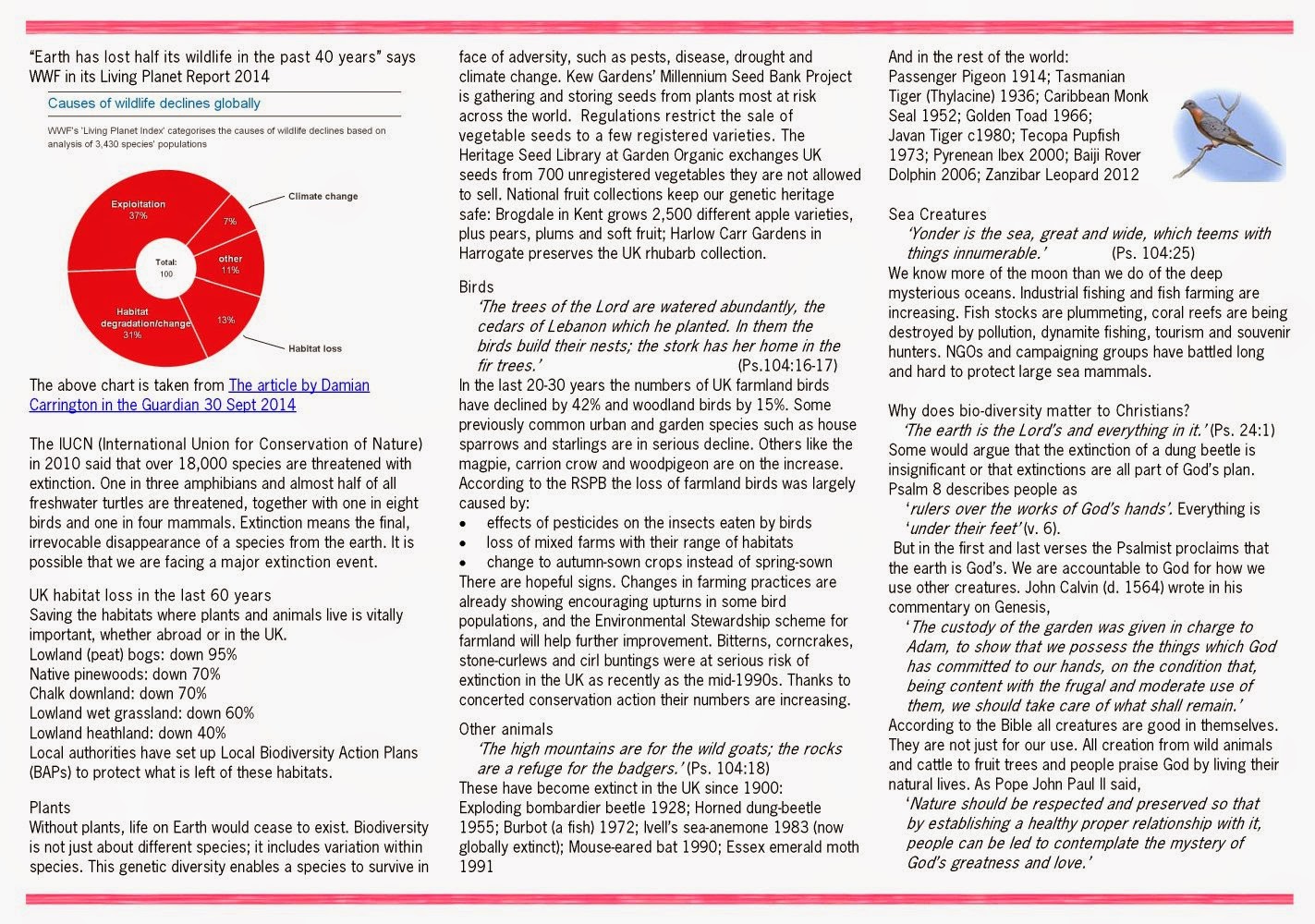You may have heard of
Forest Church through
Bruce Stanley's book, or have come across Forest Schools which are a little bit related. Or you may have taken part in similar activities in the past.
Quoting from his
website:
"Many people can describe transcendent moments in nature where they feel deeply connected to something bigger than themselves and Forest Church is a way to explore that connection within community"
I attended a workshop at Skipton on 23 Oct. Here are literally a few snapshots of the day. There is not space to write about everything.
Thirteen of us were able to come. We met at the Baptist Church in Skipton - interesting in itself for me, because this is where the "Food Bank" food that we collect in Settle goes to be sorted before being redistributed.
One person came from Scotland and one from the deep south of England, and everyone else was from Yorkshire - but that still meant a journey of nearly 3 hours for some, (Sheffield), since Yorkshire is such a big county. One man had cycled from Leeds. A few people work for the Church of England and the Methodist Church and one for Christian Aid. Others had different backgrounds. We had all dutifully come with hiking boots and waterproofs.
 |
We met at Skipton Baptist Church.
See how part of the room is used for sorting food for the Food Bank. |
 |
We walked up to Skipton Castle Woods.
At the entrance Bruce stopped. He explained
how it is good to have a special pause/ ritual/
gathering together before entering the area.
While he talked a robin hopped on the wall beside us |
 |
Just to prove we were in Skipton Woods.
We were each given 3 coloured pieces of paper
and as we walked we had to look for items that matched the colours.
When we gathered later he explained that we had in our way been "foraging". |
We stopped on a promontory next overlooking some big cliffs with the beds of the rock at a strong angle. I wish I had taken a picture. I would be interested to know more of the geology - it looks complicated on the geological map. So although it looks flat in the following picture, from near where I was standing it was a long way down to the stream below.
 |
| We learned about different senses |
 |
| Culminating in being given some "rose-hip leather" to taste. |
We had lunch back in the church room.(A shared lunch, having been invited to try and bring local food) .The day was a mixture of experiencing some of the activities, - and discussing how you would organise such events, and some of the theory. There are various Forest Church groups and all are different. Some are all Christians, others a mixture of people (Christians, Atheists, Pagans, Druids). The activities will also depend on the interests and experience of the group members, especially the core group.
In the afternoon we set of again, this time up the very long "Short Bank Road" to Skipton Moor / Rombald's Moor.
At the top of the road (entrance to the site) we stopped and had a good discussion about "Reading the Landscape".
"How can you tell the direction if you haven't got a compass and it is cloudy?"
In open land trees will have more branches on the south facing side.
There can be more plants indicative on nutrient enrichment on the north east side or a tree..(e.g. nettles) because sheep and other animals have sheltered here from south westerly winds.
In a town look at the satellite dishes. Most point SE because that is where the main satellite are.
 |
| Top of Short Bank Road |
 |
| The track continued upwards, as a hollaway. |
 |
We stopped an had a tea ceremony.
Nettle, elder and clover tea. |
 |
The gritstone wall, I had noticed
was covered with the
filamentous green alga
(an indicator of nitrogen compounds in the air)
Klebsormidium crenulatum |
 |
and also the nearby tree on the right.
The others were more interested in the tea ceremony
and maybe the squirrel playing nearby. |
We returned to base and had another debrief/ discussion and shared news..
A couple of people had already tried running a Forest Church Meeting.
There is a group in Bradford Soul Space that has Forest Church meeting once a quarter
Since the our workshop, I have learned that there is to be Forest Church meeting based on "Orienteering" on Wed 29 Oct at Danefield/Otley Chevin.
At a rather extreme end we were told of the
Christian Aid 70 Munros Challenge




















































